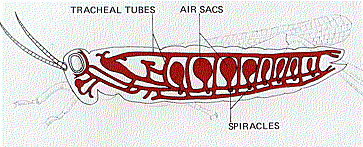Why doesn't large animals have an exoskeleton?
More specifically the questions states: Why aren't there any large animals with no internal skeleton? . I can't seem to find a reasonable answer online, so a clear explanation would be super-duper appreciated! Thanks! :)
More specifically the questions states: Why aren't there any large animals with no internal skeleton? . I can't seem to find a reasonable answer online, so a clear explanation would be super-duper appreciated! Thanks! :)
1 Answer
I see three reasons.
Explanation:
An exoskeleton on a large animal is (a) dangerous, (b) inefficient, and (c) impractical.
(a) Danger
Most animals with an exoskeleton must undergo moulting as they age.
They lose their entire outside shell and grow a new one.
However, the new exoskeleton is not complete when they shed the old one.
The bigger the creature, the longer it takes the new exoskeleton to grow.
During this time, the animal is vulnerable to the weather, predators, and disease.
Even if a large animal shed only part of its shell at a time, much of its body would still be vulnerable.
(b) Efficiency
A large animal with an exoskeleton needs an extraordinarily robust and efficient respiratory system to serve its huge volume.
Terrestrial animals with exoskeletons exchange oxygen and carbon dioxide between their tissues and the air by a system of tracheal tubes.

The tracheal system must extend close to every cell in the animal's body.
The increased weight of the tissues in an animal the size of a rabbit would crush tracheal tubes filled only with air.
(c) Practicality
The limit on how big you can get has to do with the Square Cube Law.

If you double each side of a 1 ft cube, it becomes twice as tall, but it has four times the surface area and eight times the volume.
The ability of the animal to support its weight grows with the length of the sides, but its weight increases with the volume.
Thus, growing larger makes you heavier faster than it makes you able to support your weight.
The exoskeleton on a large animal must be thick enough and strong enough to handle its weight.
The animal also needs huge muscles to move the shell.
Thus, the Square Cube Law places a practical limit on how large an animal with an exoskeleton can grow.

